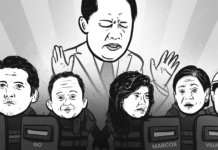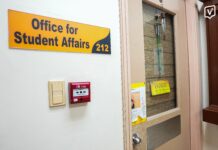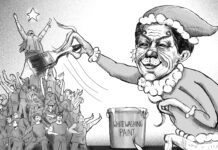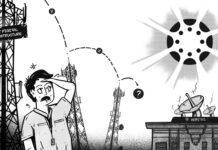THE VISIT last Jan. 18 of Pope Francis reaffirmed UST’s status as a Pontifical University and the center of Catholic education not only in the Philippines but in Asia. The latter status was more than underscored when the Pope held a meeting with other Christian groups and with leaders of other religions on campus. Truly the papal visit trained the world’s spotlight on UST as a world-class university and a global hub of learning and dialogue on key concerns affecting humanity.
Even before the Vatican officially announced last July that the Pope would visit the Philippines, word had already leaked that for the fourth time, the Vicar of Christ would address the young people of the Philippines and Asia on campus, repeating in the process the gestures of his predecessors, notably Pope, now Blessed, Paul VI, who came in 1970, and Pope, now Saint, John Paul II, who came twice, in 1981 and 1995.
During the July 2014 announcement, Manila Archbishop Luis Antonio Tagle did not confirm or deny that UST would get a fourth papal visit. But he gave credence to the reports when he explained that the University enjoys a “history” of papal visits. “UST always figured in previous [papal] visits to the Philippines. We’re coming from that historical datum,” he explained.
So it was somewhat anticlimactic when Tagle and Apostolic Nuncio Archbishop Giuseppe Pinto announced the official itinerary of the Pope last November that confirmed UST would indeed be graced with another papal visit.
To think that the January papal visit should have been familiar territory for UST, as it had previously welcomed two popes before Pope Francis, one would have expected a more organized way of handling the Holy Father’s visit.
But practice did not make perfect.
Gates last January 18 were supposed to have been open for all at 4 a.m., but the process was delayed reportedly to prioritize the entrance of UST volunteers and other Thomasians, leaving the general public, who had slept overnight outside, frustrated.
The queue before the gates were haphazard and unkempt, so much so that other volunteers were not able to enter the campus.
The performance of the volunteers left much to be desired. When the Pope arrived, they themselves broke the security barricade they had formed in order to take photos and video footage of the Pope.
Sadly, University leaders dodged questions on the rather spotty handling by UST of the important visit.
Though Pope Francis’ UST visit was largely managed by Vatican and higher Church authorities, UST should have exerted more leadership by allowing more people eager to be graced, like Thomasians, with the Pope’s presence to the campus.
But it appears UST and its community merely tried to protect their prerogative in meeting the Pope first, not conscientious of the fact that the Pope came to the country to meet everyone who cared for his message of mercy and compassion. Many people had in fact expected UST to be as welcoming as in 1995 when it generously opened its campus to non-Thomasians so that all could benefit and be blessed by the presence of Pope John Paul II.
But things had apparently changed in 2015. The security considerations, admittedly very urgent this time, might have frozen UST authorities so that they must have felt reluctant and even scared at letting in the thousands eager to see the Pope right on his pontifical campus.
But to be sure, UST should have devised a means to ensure security without denying Filipino Catholics the privilege, nay their right, to see the Pope. A numbered ticketing system should have been devised. A Pontifical University, UST should have learned from the Vatican itself which organizes the Wednesday general audience with the Pope: only those with tickets are allowed entry to St. Peter’s Square or to the Pope Paul VI Hall. But that was not the case. The least the University could have done was establish better collaboration with the Vatican and other high papal visit organizers.
But even without its history of papal visits and its ties with the Vatican, the University is not entirely ignorant or incapable of managing huge crowds and ensuring security, especially since it has held vast big-ticket gigs such as the Quadricentennial celebrations in 2011 and the annual Paskuhan festivities.
The Pope’s visit to the University, however short, left tens of thousands of Catholics, blessed and inspired but wishing things could have been better handled, if only for UST to be graced again by a fifth and further visits. Perhaps by then, UST, coming from the “historical datum” of its mixed performance of handling the 2015 visit, would be better organized so it could truly live up to its pontifical tag.














